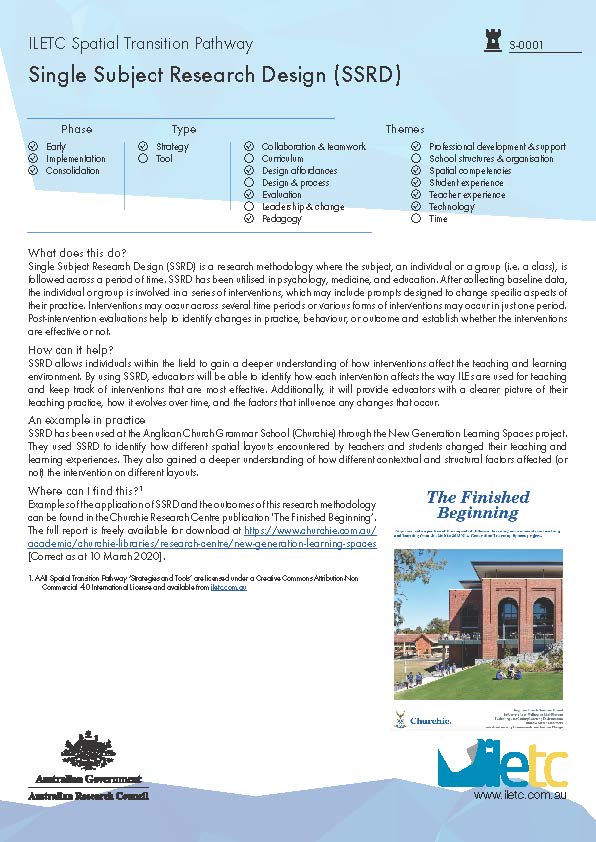| Introduction | Wayfinding activity | Spatial typologies | Spatial transition case studies | Spatial transition resources |
Spatial Transition Pathway
The Spatial Transition Pathway provides a framework for the strategies and tools which support teachers to make the journey of change into innovative learning environments. Strategy is defined as an explicit concept, theory or practice that enhances teachers’ use of innovative learning environments. A tool is an identifiable activity or protocol, that implements a strategy. You can use the database to search for strategies and tools by temporal phase or transition theme(s). If you would like to contribute a strategy or tool, please contact the ILETC team.
Single Subject Research Design (SSRD)
Single Subject Research Design (SSRD) is a research methodology where the subject, an individual or a group (i.e. a class), is followed across a period of time. SSRD has been utilised in psychology, medicine, and education. After collecting baseline data, the individual or group is involved in a series of interventions, which may include prompts designed to change specific aspects of their practice. Interventions may occur across several time periods or various forms of interventions may occur in just one period. Post-intervention evaluations help to identify changes in practice, behaviour, or outcome and establish whether the interventions are effective or not

